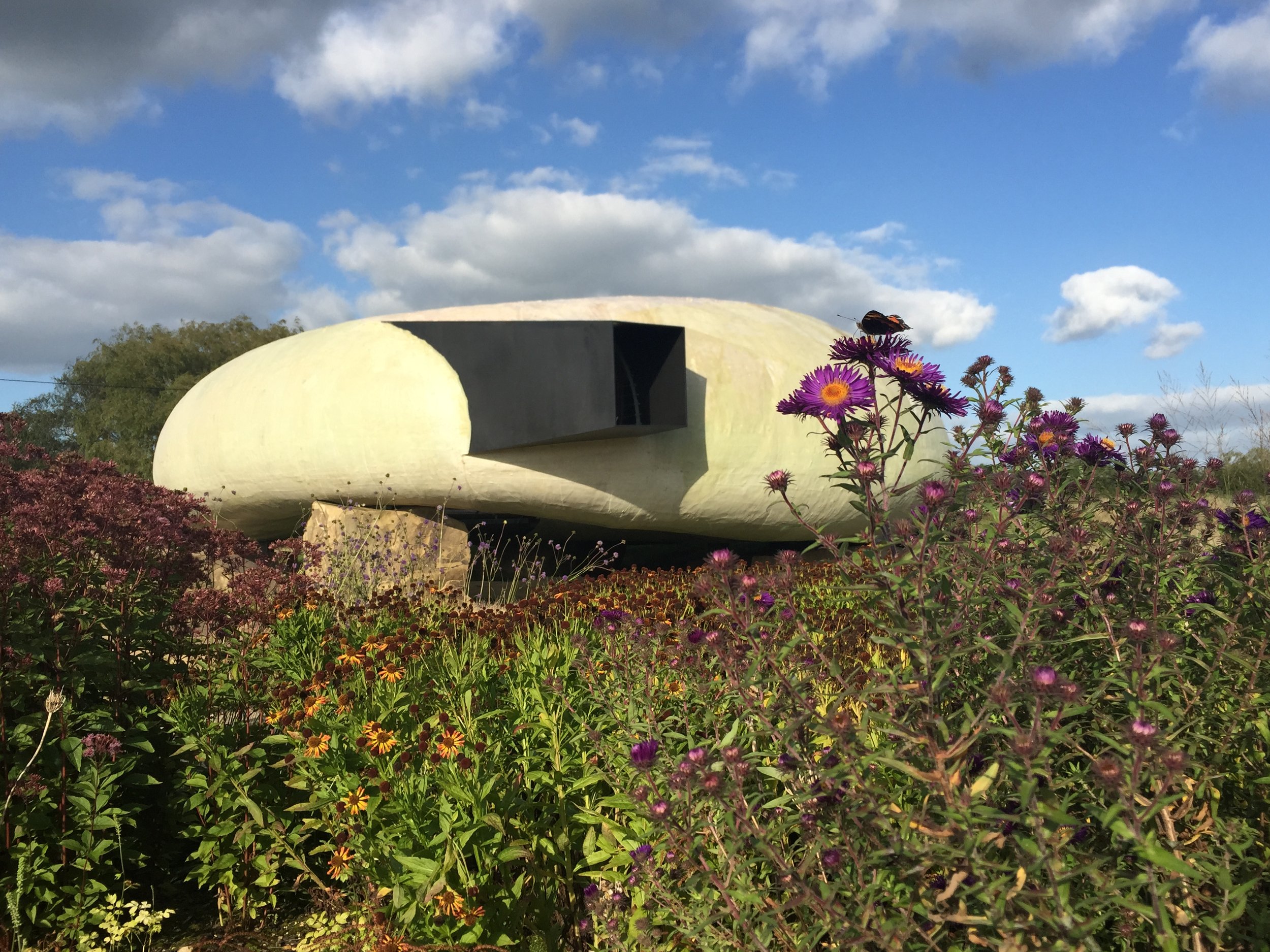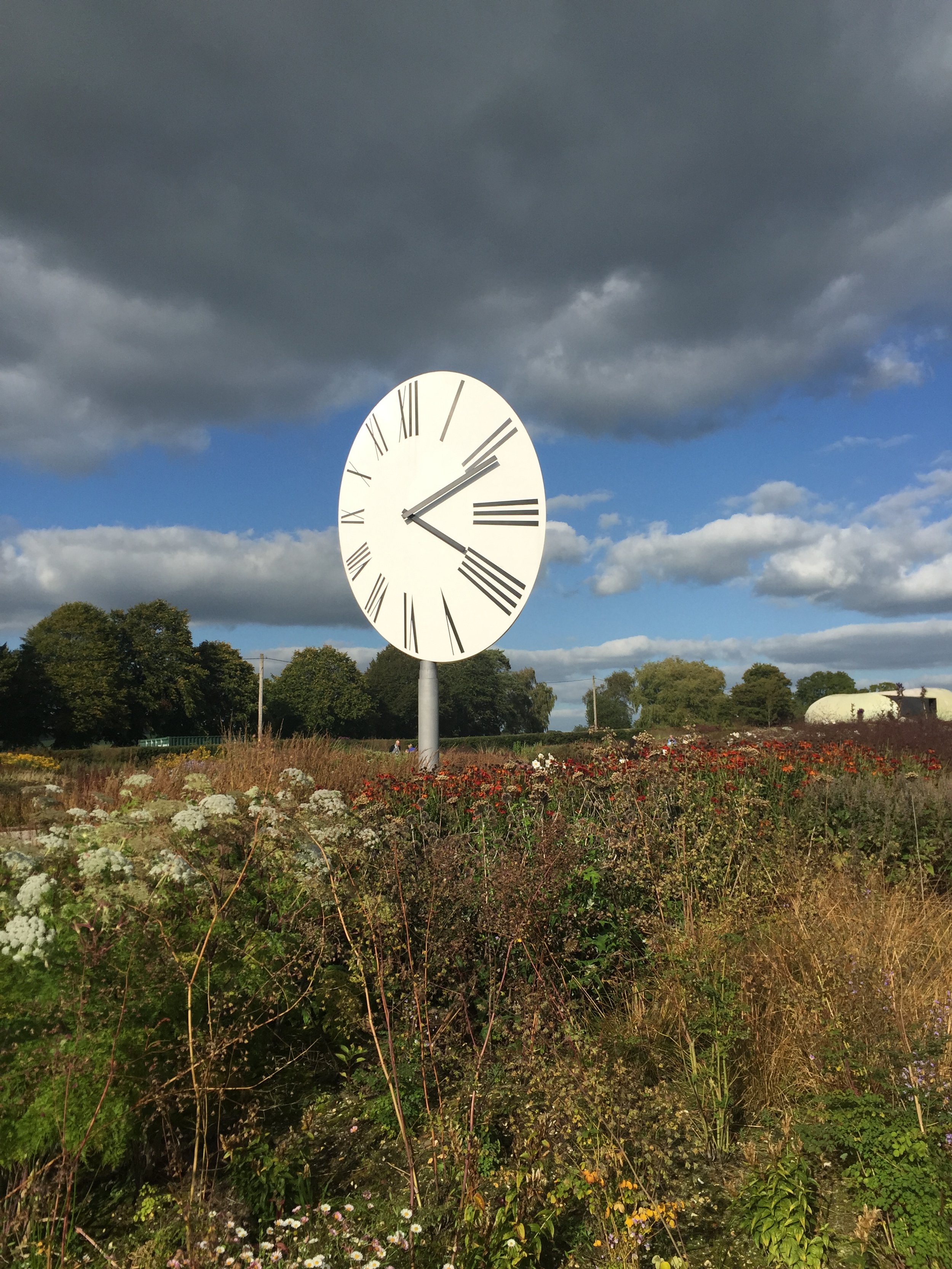A Harmonious Contrast: Exploring Piet Oudolf’s Garden & Jenny Holzer’s Provocative Art at Hauser & Wirth Somerset
During my visit to Hauser & Wirth Somerset in September 2015, I was captivated by the harmonious contrast between Piet Oudolf’s serene garden and Jenny Holzer’s provocative art exhibition. Piet Oudolf, a renowned Dutch landscape designer, is celebrated for his naturalistic planting style that emphasizes biodiversity and seasonal change. His 1.5-acre perennial meadow, Oudolf Field, is a masterpiece of landscape design, featuring a stunning array of textures and colors that evolve with the seasons. The garden is meticulously curated yet feels effortlessly wild, showcasing perennials and grasses that attract various insects and wildlife, promoting a healthy ecosystem.
The garden’s design includes the minimalist yet striking Pavilion, which offers a space for contemplation amidst nature’s beauty. The Pavilion, with its clean lines and open structure, is a testament to Oudolf’s ability to blend functionality with aesthetics. As visitors wander through the garden, they encounter a living tapestry where each plant plays a part in a larger, symphonic composition. The nearby clock tower adds a historical dimension to the site, symbolizing the passage of time and complementing the garden’s theme of natural cycles.
In stark contrast to the tranquil garden, Jenny Holzer’s “DEMENTED WORDS” exhibition presented a powerful and provocative exploration of contemporary political and social issues. Holzer, an American conceptual artist known for her incisive use of text, transformed the gallery space with works that challenged viewers to confront uncomfortable truths. One of the central pieces, “WTF” (2022), was an electronic sign displaying tweets from Donald Trump and posts from QAnon, mounted on a swinging mechanism that echoed the chaotic nature of social media discourse. This installation highlighted the unsettling impact of digital communication on modern politics.
The exhibition also featured nearly 300 ‘curse tablets’ scattered across the gallery floor and walls. These tablets, inspired by ancient Roman practices, were inscribed with modern curses, creating a powerful juxtaposition between historical and contemporary themes. Holzer’s large-scale paintings on linen were another highlight. These works were based on redacted government documents, such as the Mueller Report, with the redacted areas covered in vibrant colors and metal leaf. The paintings’ visual allure contrasted sharply with the troubling political content they concealed, inviting viewers to reflect on the hidden truths of our times.
Holzer’s exhibition was a stark reminder of the power of words and the pervasive influence of media and politics in our daily lives. Her use of electronic signs and historical references created a dialogue between the past and the present, urging viewers to consider the implications of modern communication and governance.
Together, Oudolf’s garden and Holzer’s art created a unique cultural experience that invited reflection on both the serenity of nature and the complexities of modern life. The tranquil, ever-changing beauty of the Oudolf Field provided a perfect counterbalance to the intense and thought-provoking works inside the gallery. This blend of art and nature offered visitors a space to contemplate, engage, and be inspired by the interplay of design, culture, and contemporary issues.

















